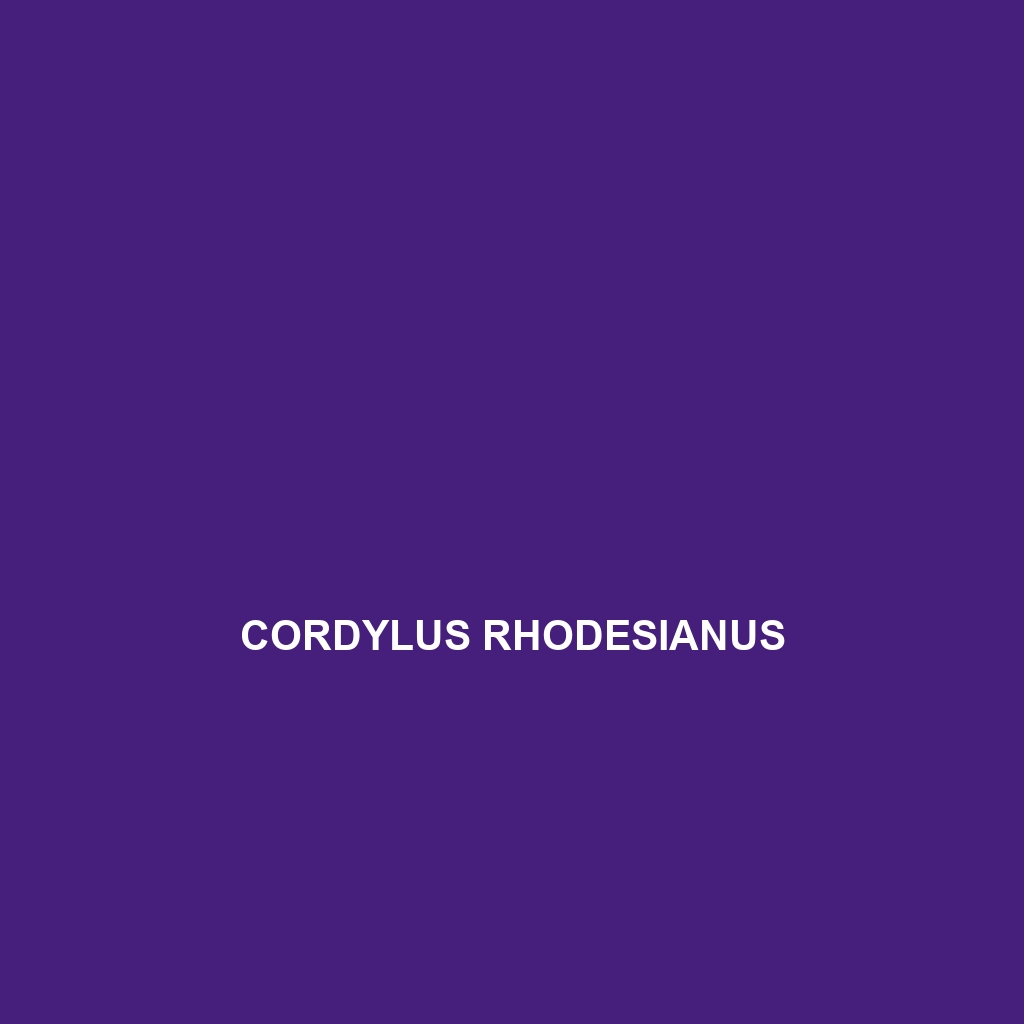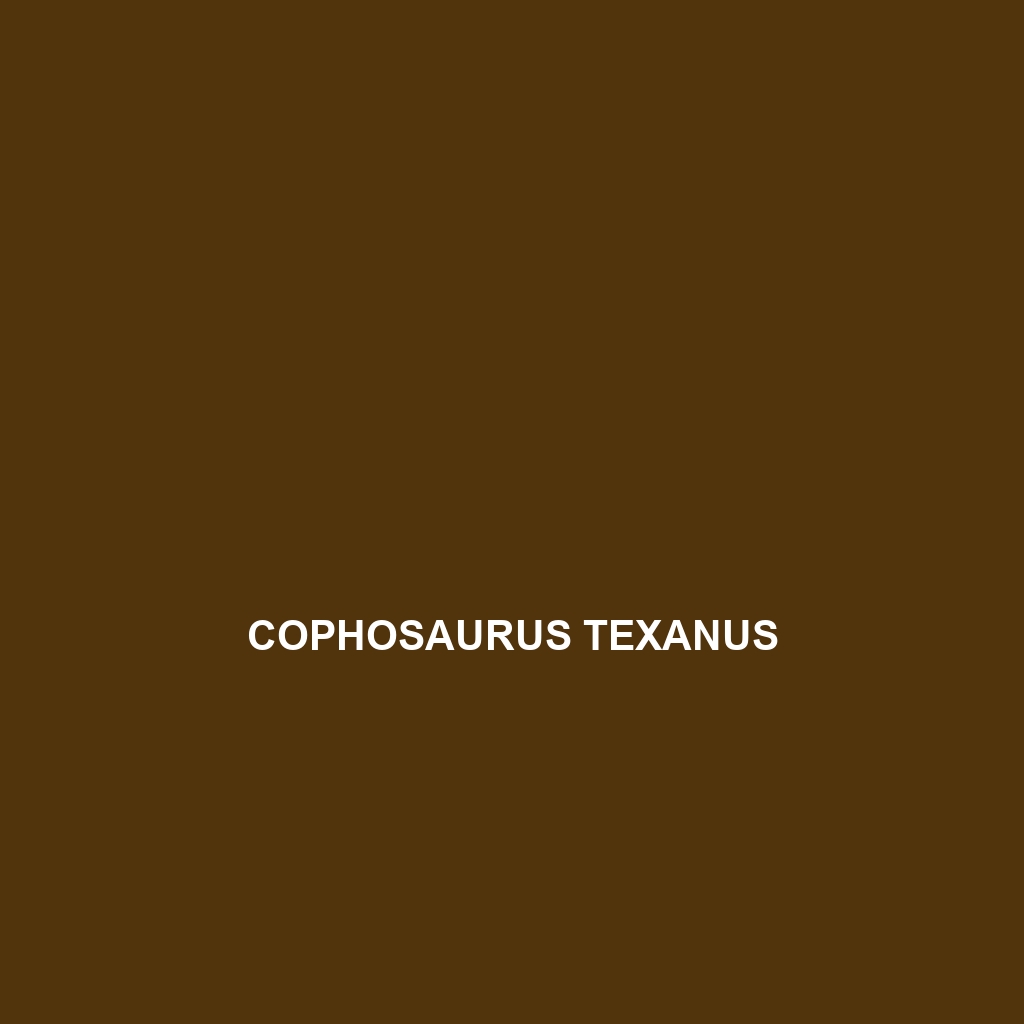-

Cordylus oelofseni
Discover the Oelofsen’s girdled lizard, Cordylus oelofseni, a striking 18-25 cm reptile known for its distinctive spiny armor and ability to blend into rocky habitats of southern Africa. This insectivorous species is diurnal and exhibits fascinating behaviors, including territorial displays and regenerative tail capabilities, making it a vital part of its ecosystem.
-

Cordylus machadoi
Discover the unique Cordylus machadoi, a robust lizard native to southern Africa, known for its distinctive spiny dorsal ridge and effective camouflage. This diurnal species thrives in rocky terrains and plays a vital role in maintaining the ecosystem by preying on insects while facing threats from habitat loss and climate change.
-

Cordylus jonesii
Discover the Cordylus jonesii, or Jones’s Girdled Lizard, a unique species found in the savannah and scrublands of southern Africa. Recognized for its robust body, spiky scales, and diurnal basking habits, this lizard plays a vital role in its ecosystem by controlling insect populations while adapting its coloration for effective camouflage.
-

Copeoglossum margaritae
Discover the vibrant Copeoglossum margaritae, a slender lizard native to the humid tropical forests of Panama and Costa Rica, known for its striking green, yellow, and black patterns. This diurnal insectivore plays a vital role in its ecosystem, controlling insect populations while showcasing fascinating behaviors, including territorial displays during mating season.
-

Contomastix celata
Species Description: Contomastix celata Common Name: Contomastix celata Scientific Name: Contomastix celata Habitat: Contomastix celata is primarily found in the temperate rainforests of South America, particularly in regions such as the Andes mountains and surrounding lowland areas. These lizards thrive in moist, humid environments where they can easily blend in with the leafy forest floor.…
-

Congolacerta asukului
Discover the vibrant Congolacerta asukului, a medium-sized lizard native to the tropical forests of the Democratic Republic of the Congo, known for its striking coloration, agile movements, and crucial role as an insectivore in its ecosystem. This diurnal species thrives in humid environments, exhibiting fascinating territorial behavior during the breeding season.
-

Colobosauroides cearensis
Discover the stunning Colobosauroides cearensis, a vibrant lizard native to northeastern Brazil’s humid tropical forests, characterized by its slender body, exceptional camouflage, and diet primarily composed of insects. This fascinating species plays a vital role in its ecosystem while facing vulnerabilities due to habitat loss.
-

Cnemidophorus splendidus
Cnemidophorus splendidus: An In-Depth Species Description Common Name: Cnemidophorus splendidus Scientific Name: Cnemidophorus splendidus Habitat Cnemidophorus splendidus, commonly known as the splendid whiptail lizard, primarily inhabits the sandy and semi-arid regions of the southwestern United States, particularly in areas such as California and Arizona. This lizard prefers open, dry habitats such as deserts, scrublands, and…
-

Cnemidophorus arubensis
The Cnemidophorus arubensis, or Aruban Lizard, is a vibrant, diurnal species endemic to Aruba, thriving in dry scrubland and coastal dunes. With a slender body that reaches 18-25 cm and a diet primarily consisting of insects, this lizard plays a vital role in its ecosystem while facing vulnerabilities due to habitat loss.
-

Cnemaspis wicksi
Discover the Cnemaspis wicksi, a unique species found in the tropical forests of Southeast Asia. This slender, insectivorous lizard exhibits remarkable climbing abilities and exceptional camouflage, with striking patterns and a vulnerable conservation status due to habitat loss.
Search
Popular Posts
-
Lygosoma corpulentum
Discover the Lygosoma corpulentum, or fat skink, a robust insectivorous lizard native to Southeast Asia’s moist tropical rainforests and varying habitats. With a stocky body, impressive camouflage, and remarkable adaptability, this ovoviviparous species plays a crucial role in maintaining ecological balance.
-
Lygosoma boehmei
Lygosoma boehmei is a slender, nocturnal insectivore found in humid tropical rainforests and savannas of Southeast Asia, exhibiting a smooth, camouflaging texture and remarkable burrowing abilities. This vulnerable species plays a crucial role in its ecosystem by controlling insect populations and serving as prey for larger predators.
-
Lygosoma bampfyldei
Lygosoma bampfyldei, commonly found in tropical and subtropical regions, is a moderately sized lizard measuring 15 to 25 cm, known for its elongated body and glossy, camouflage coloration. This insectivorous species thrives in moist habitats and plays a vital role in maintaining ecological balance by controlling insect populations.
Categories
Tags
animal adaptations (924) animal behavior (5000) animal reproduction (865) behavior (920) biodiversity (7853) conservation (1670) conservation efforts (1778) conservation status (5748) diet (2104) ecological balance (2087) ecological role (1952) ecosystem (1469) ecosystem role (2901) endangered species (2514) habitat (3280) habitat conservation (1136) Habitat Destruction (1421) habitat loss (3385) herpetology (870) insectivorous reptiles (948) IUCN Red List (1971) lizard behavior (881) lizard diet (944) lizard reproduction (1101) nocturnal animals (2754) nocturnal behavior (2592) nocturnal reptiles (1061) physical characteristics (2058) predator-prey relationships (927) reproduction (2890) reptile behavior (1037) reptile conservation (1348) reptile reproduction (1069) rodent species (1325) seed dispersal (2145) Seed Disperser (979) small mammals (1168) snake behavior (952) snake diet (1061) snake reproduction (1129) tropical forests (948) Vulnerable Species (4926) wildlife (2511) wildlife conservation (5355) wildlife protection (1008)


